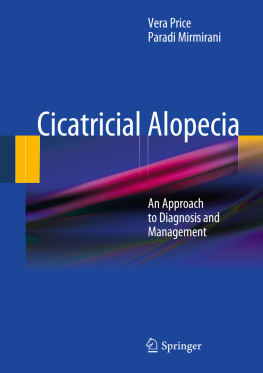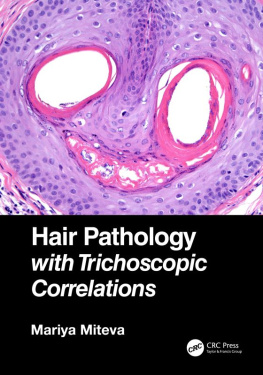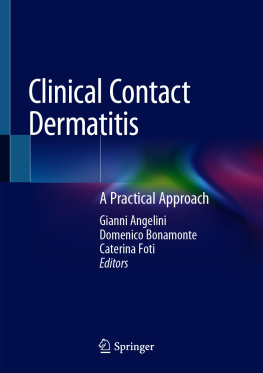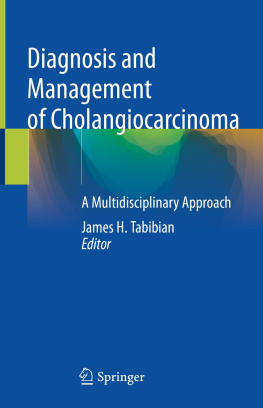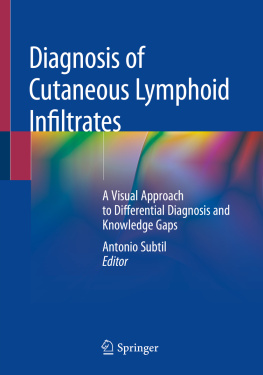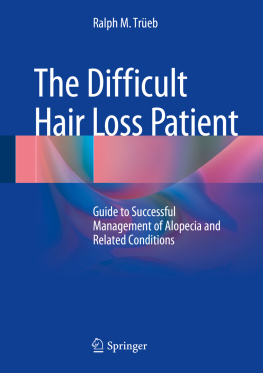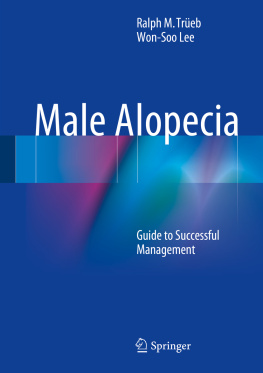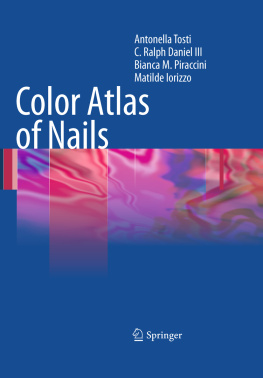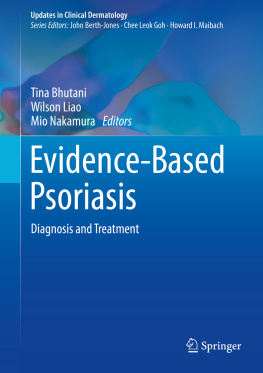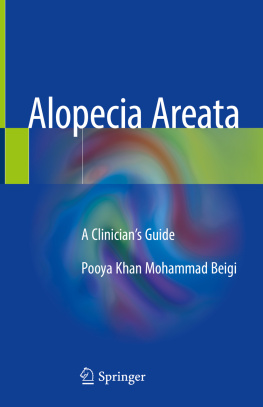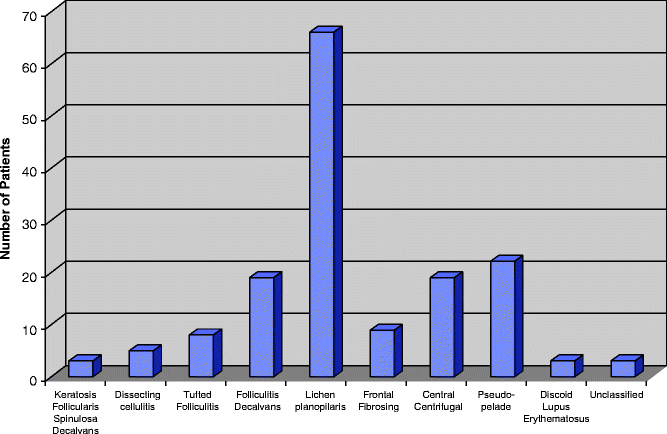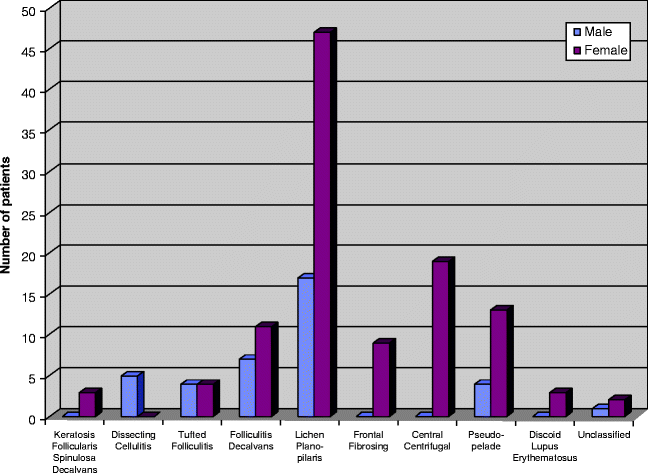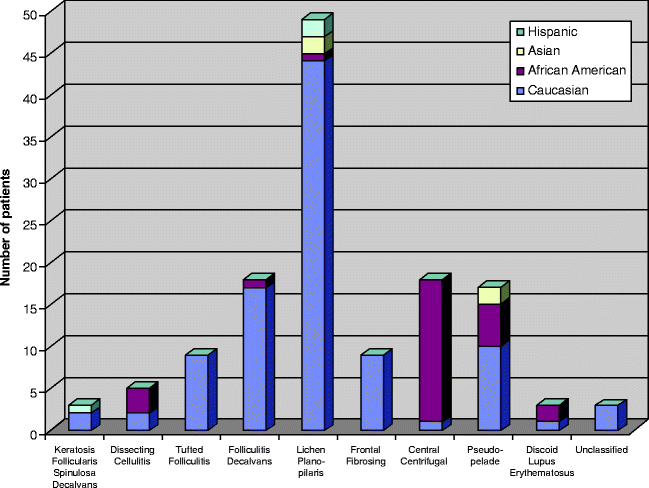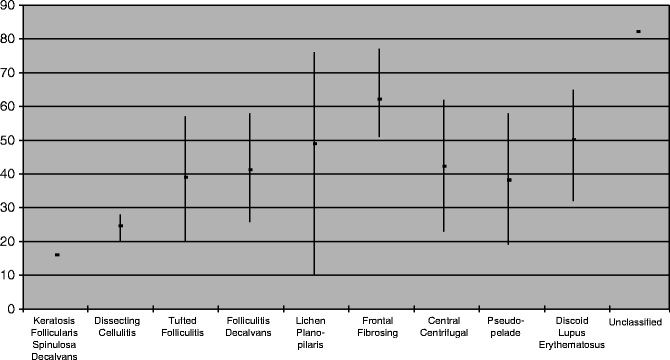Vera Price and Paradi Mirmirani (eds.) Cicatricial Alopecia An Approach to Diagnosis and Management 10.1007/978-1-4419-8399-2_1 Springer Science+Business Media, LLC 2011
1. Introduction
Vera Price 1
(1)
Department of Dermatology, University of California, San Francisco, San Francisco, California 94115, USA
(2)
Department of Dermatology, Case Western Reserve University, Cleveland, OH, USA
(3)
Department of Dermatology, The Permanente Medical Group, 975 Sereno Drive, Vallejo, California 94589, USA
Vera Price Professor (Corresponding author)
Email:
Paradi Mirmirani Staff Physician
Email:
Abstract
Cicatricial alopecias (scarring alopecias) encompass a diverse group of inflammatory disorders that cause permanent destruction of the pilosebaceous unit and irreversible hair loss. They may be primary or secondary . In the primary group, the hair follicle is the target of a folliculocentric inflammatory attack that results in replacement of the follicle with fibrous tissue. The secondary scarring alopecias are the result of a non-folliculocentric process or external injury; follicular destruction is secondary and incidental, as in severe infections (kerion), infiltrations (tumors, metastatic cancer, sarcoid), physical injuries (thermal burns, radiation, traction). In this monograph, the focus is on the primary scarring alopecias.
How Are the Cicatricial Alopecias Classified?
Cicatricial alopecias (scarring alopecias) encompass a diverse group of inflammatory disorders that cause permanent destruction of the pilosebaceous unit and irreversible hair loss. They may be primary or secondary . In the primary group, the hair follicle is the target of a folliculocentric inflammatory attack that results in replacement of the follicle with fibrous tissue. The secondary scarring alopecias are the result of a non-folliculocentric process or external injury; follicular destruction is secondary and incidental, as in severe infections (kerion), infiltrations (tumors, metastatic cancer, sarcoid), physical injuries (thermal burns, radiation, traction). In this monograph, the focus is on the primary scarring alopecias.
A first step in improving dialogue among clinicians and investigators was the workshop on cicatricial alopecia sponsored by the North American Hair Research Society in 2001. This workshop proposed a working classification of the cicatricial alopecias based on the predominant cellular infiltrate, whether lymphocytic, neutrophilic, mixed, or absent in the end stage. After this workshop, the term cicatricial alopecia was adopted in the US, but the terms cicatricial and scarring are interchangeable. This classification continues to evolve, and a modified version is followed here (Table ). The classification is currently used as a guide for selecting treatment.
Table 1.1
Working classification of primary cicatricial alopeciaa
Lymphocytic group |
Lichen planopilaris |
Graham Little syndrome |
Frontal fibrosing alopecia |
Pseudopelade (Brocq) |
Central centrifugal cicatricial alopecia |
Chronic cutaneous lupus erythematosusb |
Keratosis follicularis spinulosa decalvansb |
Neutrophilic group |
Folliculitis decalvans |
Tufted folliculitis |
Mixed group |
Dissecting cellulitisb |
Folliculitis keloidalisb |
End stage nonspecific group |
a The above is a modification of the working classification of primary cicatricial alopecia which was proposed by the North American Hair Research Society in 2001. This modified classification is currently used by us as a guide for selecting treatment
b Not a primary cicatricial alopecia
What Are the Demographics of Patients with Cicatricial Alopecia?
The incidence of the cicatricial alopecias is not precisely known. The annual incidence rate of lichen planopilars (LPP) was reported in four tertiary hair research centers in the United States (Table ). Annual incidence rate of LPP was defined as the percentage of new patients with biopsy-proven LPP and clinicopathologic correlation among all new patients with hair loss seen over a 1-year period. In these four centers, the annual incidence of LPP varied from 1.15 to 7.59%, which attests to the relative rarity of LPP.
Table 1.2
Annual incidence of LPP in four tertiary hair research centers
Hair research center | All new hair loss cases (annual) | New LPP cases (annual) | LPP annual incidence rate (%) |
|---|
University of California, San Francisco | | 44a | 7.59 |
University of Pennsylvania | | | 1.88 |
Baylor Hair Research and Treatment Center | | | 1.15 |
Cleveland Clinic | | 3b | 4.72 |
Reprinted from Ochoa BE, et al. Lichen planopilaris: annual incidence in four hair referral centers in the United States. J Am Acad Dermatol. 2008;58(2):353, copyright 2008, with permission from Elsevier
LPP Lichen planopilaris
a Includes cases of LPP, frontal fibrosing alopecia, and pseudopelade (Brocq)
b Number rounded up from 2.6
In a survey of 159 patients with cicatricial alopecia seen in the Dermatology Department, University of California, San Francisco between 2003 and 2005, the relative incidence of the various cicatricial alopecias, gender predisposition, racial incidence, and age of onset are shown in Figs..
Fig. 1.1
Survey of 159 patients with cicatricial alopecia: Relative incidence of various cicatricial alopecias seen in one geographic site, the San Francisco Bay area, between 2003 and 2005. This incidence will vary at different geographic locations, depending on ethnic populations and referral patterns
Fig. 1.2
Survey of 159 patients with cicatricial alopecia: gender predisposition
Fig. 1.3
Survey of 159 patients with cicatricial alopecia: ethnicity
Fig. 1.4
Survey of 159 patients with cicatricial alopecia: age of onset
Why Is Hair Loss in Cicatricial Alopecia Irreversible?
As with non-scarring alopecias such as androgenetic alopecia and alopecia areata, the cicatricial alopecias occur in healthy people and are not contagious. However, unlike androgenetic alopecia and alopecia areata, the hair loss is irreversible. Why is this?

